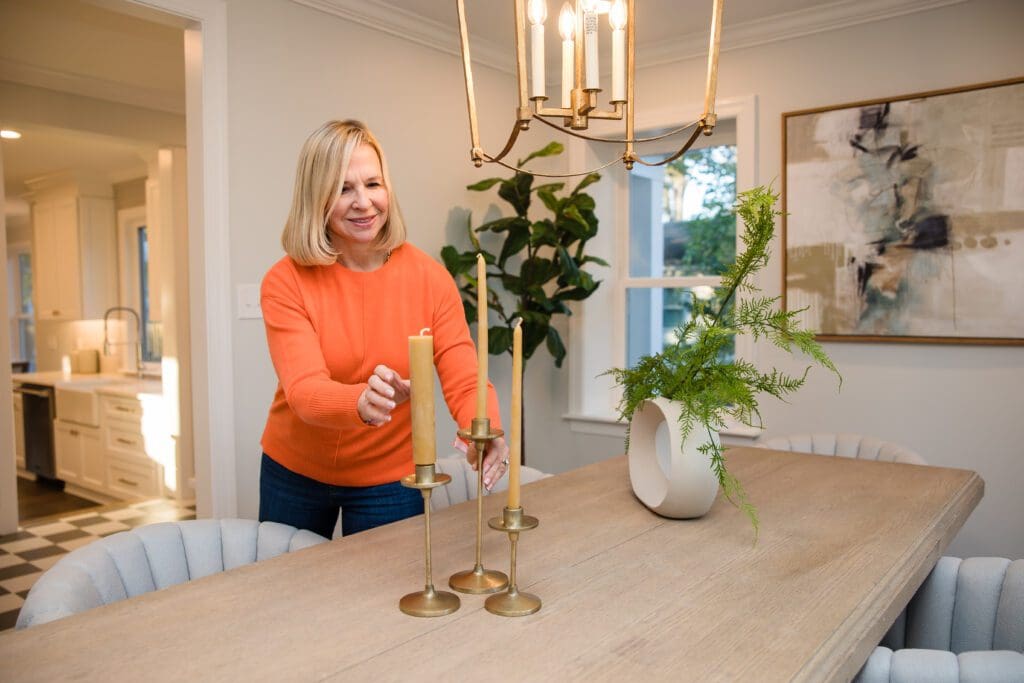What to leave when moving out? Keep the paint cans so the buyer can touch up or remove them? How about those extra tiles – do they stay or go?
Time and again, sellers run into sticky situations when preparing to move out of a home. Confusion can arise about what items stay with or in the home and what items can be (and should be) taken when moving out.
For example, sellers sometimes take bathroom mirrors that buyers think convey with the home. Conversely, we have seen cases of sellers leaving items, trying be helpful, only to have to pay to get them removed at the 11th hour.
The rule of thumb in our area is that, other than electronics, if something is affixed to the wall or the ground, it conveys with the house — unless otherwise specified.
Buyers should be specific about what they want or don’t want to convey by writing it into the contract. If the bathroom mirrors are hanging on the wall and not affixed the seller may take them.
Sellers should let their listing agent know which items they will not convey before putting their home on the market. Often, it’s a good idea to remove any such items before photos are taken to eliminate confusion. If sellers leave these items in the house, be sure when an offer is received, to note anything that will be taken (or left). For instance, sellers should ask in advance if the buyer wants the paint cans for touch up and colors or if you should remove. Sellers should also be sure to check attics and sheds to be sure they are clear.
Before moving in or out, the best thing to do is to check the conveyances page of the sales contract to see what exactly stays with the home. Doing so will eliminate many questions and potential headaches.
Here is our breakdown of what traditionally stays in a property when a home is sold (unless otherwise noted in the contract):
Appliances
In our area, the general rule of thumb is that appliances stay in the home when the seller moves out. However, this is a guideline and NOT written in stone. Again, check the conveyances page of the sales contract, which outlines all of the home’s appliances and their status, so there are no last minute surprises.
TV Wall Mounts
Any surface or wall mounted electronic components do NOT convey with the home. So unless noted otherwise, the seller will take any such items. Note that TV mounts *do* convey with the home (but the TV does not).
Light Fixtures
Light fixtures, lamps, and chandeliers often spark debate between the parties. Similar to the TV wall mounts, light fixtures (requiring tools to remove) must remain in the house unless the seller explicitly states in the written contract the item isn’t included in the sale. Verbal statements do not count! As mentioned above, if a seller really wants to keep a special light fixture, they should remove it prior to listing the home to keep this from becoming an issue at settlement.
Built-Ins
Any built in furniture or items such as bookshelves, desks, benches or entertainment centers, stay in the home. If they are not built-in, the rule is they would not convey unless otherwise specified.
Window Treatments
Custom blinds and shutters (e.g. plantation shutters) stay with the home. So do curtain rods! Curtain or draperies, on the other hand, are a case-by-case basis, so pay special attention to the contract!
Alarm Systems & Smoke Detectors
Any alarm system, unless wireless, stays in the home. Smoke and carbon monoxide detectors also stay. Buyers should plan to replace all of these batteries on moving day and test the devices right away.
Cabinet Hardware
Any cabinet hardware must remain in place. If the sellers just can’t part with their special antique glass drawer pulls, they can remove and take them when moving. But they will need to get the buyer to agree to it in the contract and replace them with another option.
Mirrors
It is generally assumed that any mirrors hung in bathrooms (above the sink) will convey with the house. However, if they are just hanging it is possible the seller could remove it since it is technically not affixed. If you are a buyer and you want to be sure the bathroom mirror conveys, write it into the contract. If you are a seller and want to be sure you can remove the mirror, add it to the contract or have your Realtor let the buyers know it does not convey in advance.
Outside
Any landscaping – plants, shrubs and trees planted in the ground — must remain with the house. However, any backyard equipment—such as patio furniture, lawn chairs, tables, portable fire pits, swings and grills—are considered the seller’s personal items and should leave with the seller. Note that swingsets generally convey, but not always, so buyer should be sure to ask upfront.
Items in the Garage or Storage Areas
Loose items or non built-in shelving do not convey with the house. If the seller would like to be helpful and leave extra paint cans or storage shelving that is not affixed, they should check with the buyer in advance. Similarly, if buyers would like these items, they should request them up front.
The Bottom Line
So, what to leave when moving out? When in doubt, ask!
Buyers and sellers should first check the conveyances page of the sales contract to see what items convey with the home before settlement. If there is still doubt, check with you agent, who will likely know or can quickly find the answer.
If there is something a buyer really loves and would like to convey with the home (such as a chandelier or mirror), their agent can always write the request into the contract. The seller is never obligated to meet such requests. The bottom line is that what is affixed stays, everything else does not and that verbal statements do not count — only what is written in the contract.
It is important to note here that the property should be in substantially the same condition as it was at the time of home inspection or the offer being written (depending on which option was selected when the buyer wrote the offer). So for example, leaving a giant hole in the wall would be a problem, while a small hole the size of a standard nail would not need to be fixed. Of course, it’s always preferable when sellers do fix such issues, but it is not required. Buyers can always request this work be done in the sales contract or at the home inspection prior to settlement.
___
If you are thinking of a move, and we can help, please reach out! Even if you’re not quite ready, we are always happy to talk about your options and what makes the most sense for you.
Contact Us
For more helpful articles like this one, sign up for our weekly blog roundup.


